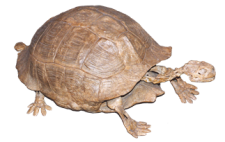Hello and welcome !
This is the lab homepage of Prof. Dr. Torsten Scheyer, adjunct professor in Paleontology and researcher in the working group «Evolutionary Morphology and Palaeobiology of Vertebrates» at the Department of Paleontology, University of Zurich.
For the second/main PI of the working group, please visit the website of Prof. Dr. Marcelo Sánchez here: https://www.msanchezlab.net/
Our research covers topics in paleobiology, systematics, evolutionary morphology, and comparative developmental biology. We aim at reconstructing the evolution of complex morphological structures. We are mostly interested in organismal evolutionary change at the phenotypic level, but sometimes also become involved in genetic studies, as when we study molecular markers of early bone development. Most of our work deals with diverse mammalian and archosaurian groups, although occasionally we were involved in studying other animals (for example, when we found interesting fossils in the field).
The methods we use include comparative anatomy, histology and phylogenetic systematics. We make use of whatever techniques are relevant to document and compare anatomical traits, including dissections, computed tomography, bone histology and morphometrics. In the palaeohistology lab, we investigate the microstructure of skeletal tissues.
Information for prospective Masters‘ students at UZH and the ETHZ
Research foci in our lab concern at comparative developmental morphology and palaeontology.
Students have the opportunity to both get trained to use a hammer in the field to find and investigate fossils, and also to use a microscope to study living organisms. They can work with fossils but also with embryos of living groups, related to the extinct forms. For example, we collect fossil turtles in the field to study the evolution of the carapace, but also investigate carapace development in extant turtles; and we study the development of limbs in lizards and then compare this to developmental series from the fossil record. We see disparate research (e.g. embryology, palaeontological fieldwork, systematics, or comparative anatomy) on large-scale themes as the best training ground.
BUSS: Intl. Biology Undergrade Summer School
If you think you may be interested in doing a Master's thesis in my lab, please contact me.
Examples of areas of research for Master's theses are:
• Anatomy and systematics of Triassic reptiles from the World Heritage Site Monte San Giorgio Switzerland/Italy
• Anatomy and systematics of Triassic reptiles from the Prosanto Formation, Ducan area, Switzerland
• Cranial and endocranial anatomy of extant and extinct reptiles using 3D data
• Bone microstructure in living and fossil reptiles (and other vertebrates)
Information for prospective doctoral students and postdoctoral researchers
We much appreciate interest in our research group. If you are seriously considering working with us, we assume you have read at least some of our papers and have identified an area in which to work. We are always interested in hearing from prospective students and postdocs, especially if the communication involves some specific and particular interest and reason for the interest. Meeting personally at conferences is very useful. We are limited though in what we can do as funding is needed for any position.
Positions in the « Evolutionary Morphology and Palaeobiology of Vertebrates » working group are advertised in visible websites. They are usually tied to grants about some specific research projects, but members of our lab usually develop an independent research profile. In some occasions, some people come with own funding from proposals they prepare, after we have met and mutually established it is fitting for both sides to work together.
Doctoral students become students at the Evolutionary Biology Graduate Programme. This programme has a procedure to apply, but ultimately the funding and the decision to accept students is done by labs, so you are advised to contact PIs directly should you be interested. You might want to consult to following websites for further funding options (please be aware of the fact, that some of the programs do not provide coverage of salaries for the full time of a PhD though):
https://www.research.uzh.ch/en/funding/phd/uzhcandoc.html
https://www.sbfi.admin.ch/sbfi/en/home/education/scholarships-and-grants/swiss-government-excellence-scholarships.html
In terms of funding to support postdoctoral research, below are a few links to very competitive sources in Switzerland. There are other programmes from individual countries and from the EU (Marie Skłodowska-Curie Postdoctoral Fellowships) as well.
General Information on Postdoc funding from the UZH
Swiss National Science Foundation (look for Ambizione)
Swiss Government Excellence Scholarships for Foreign Scholars
Marie Skłodowska-Curie Fellowships
Female doctoral students and postdocs in Switzerland might also want to check out specifically the Marie Heim-Vögtlin (MHV) funding opportunity



